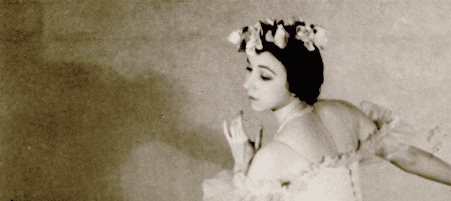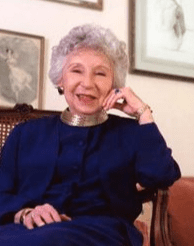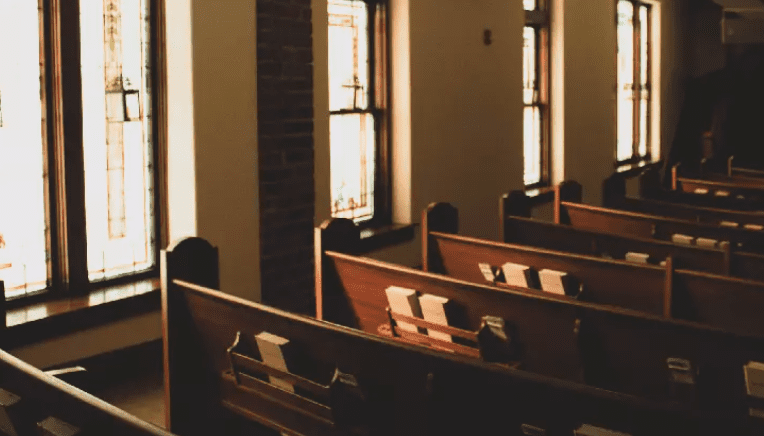
- Long before she came to Jackson, Mara made a name for herself in the world of dance.
Thalia Mara Hall was built in the center of the downtown arts and cultural district in Jackson in 1968. It was called the Jackson Municipal Auditorium until 1994 when the 2040-seat theater was re-named to honor dancer, educator, author, and patron of the arts – Thalia Mara.
With the current brouhaha about the mold situation at Thalia Mara Hall, now may be a good time to remember who the theater was named after. Unlike those who are currently responsible for the upkeep of Thalia Mara Hall, Thalia Mara herself was a person who knew how to get things done.
The story of Thalia Mara and Jackson begins when she moved to Jackson on her own at the age of 65. She knew no one, yet she never met a stranger.

“I recognized a kindred spirit when I met Thalia Mara. I knew her for 28 years,” said Carla S. Wall.
Wall collaborated with Carolyn J. Brown to write To Dance, to Live: A Biography of Thalia Mara, published by University Press of Mississippi. The book gives the first full account of a life devoted to the arts.
Wall was one of Mara’s closest friends and caretaker of the photo archives in the book.
“Thalia was a creative thinker, a visionary and she demanded excellence. When you worked with Thalia, you had to buckle up. But when you got to know her, she was also warm and compassionate. She had an extraordinary ability to get others to see her vision and she believed the arts were for everyone. On reflection, I see Thalia Mara as a role model for a full, productive life.”
A Life of Dance
Long before she came to Jackson, Mara made a name for herself in the world of dance. She was born in Chicago on June 28, 1911, to parents who immigrated to the United States from Russia. Her birth name was Elizabeth Simons, but she later chose Thalia Mara to be her stage name. When she was a child, Mara’s mother signed her up for piano and dance lessons to keep her occupied after school. On weekends they went to arts events in Chicago. Mara saw famed ballerina Anna Pavlova perform The Dying Swan, and it was a turning point in her life.
Adolph Bolm introduced Mara to the Russian School of Ballet. Bolm moved to Chicago in 1919 and opened the School of Dance in 1923. At the age of 16, Mara traveled to Paris alone to study with Olga Preobrajenska. Mara’s mother joined her six months later. During her time in Paris, Mara traveled and performed with several dance companies. She met her husband, Arthur Mahoney, while in Paris. The couple danced together at Radio City Music Hall with the corps de ballet in 1932 and toured the United States throughout the 1930s. They got married in 1939. On a trip to Buenos Aires, they got a parrot named Pepo the Parrot, who traveled with them everywhere, and lived for 65 years.

Mara and Mahoney were named co-directors of Jacob’s Pillow in 1947, and that same year they were featured on the cover of Life magazine. They started two schools of dance in New York. The School of Ballet Repertory was founded in 1947 with high standards of dance instruction aimed at dance teachers but closed in 1963 due to lack of funds. They started another school, National Academy of Ballet, an academic ballet school, in 1963. Upon graduation from the school, students were prepared for college or as principal dancers in a world class dance company. The school closed in 1973.
Thalia Mara Put Jackson on the Dance World Map
In 1975, after separating from Mahoney, Mara was invited to develop a professional ballet company and school in Mississippi. She assumed the role of artistic director of the Jackson Ballet Guild. As a teacher, Mara was demanding and expected excellence from her students, including appearance. She was elegant and stylish and expected her students to be so as well. Mara quickly recognized that she had a different set of obstacles in Jackson.
“The girls here all aspired to be cheerleaders, not dancers,” said Brown.
Another obstacle Mara had to overcome was a lack of audience for ballet in Jackson.
“Jackson was a sports town,” Brown said. “She recognized that and knew if she had a sort of competition, that would be something men could relate to.”
As a judge with the International Ballet Competition in Varna, Bulgaria, Mara worked with Robert Joffrey, the artistic director of the Joffrey Ballet, and dance writer Walter Terry to add Jackson to the competition circuit. The IBC originated in Varna, Bulgaria in 1964 and expanded to rotating events in Moscow and Helsinki, Finland. Thanks to Mara, Jackson was added to the rotation and the competition is held here every four years. The first USA International Ballet Competition was held in Jackson in the summer of 1979.

Mara resigned from the Jackson Ballet Guild in 1981. In the 1980s she formed the Thalia Mara Arts International Foundation, advancing understanding and appreciation of the arts. She was a patron of all the arts. She created a world performance series that brought world class artists to the state, including Mikhail Baryshnikov and Peter Martin.
The contributions Mara made to the arts in Jackson were so significant to the city that the Jackson Municipal Auditorium was renamed Thalia Mara Hall in 1994. A portrait by the late Jackson artist Lynn Green Root hangs in the auditorium. Thalia Mara was commended by the Mississippi Legislature in 1998 for her “monumental contributions to education and arts in Mississippi and the development of dance worldwide.”
Wall said that Mara was a teacher whose influence lasted long after class was over. She died in October 2003 at the age of 92. The auditorium that bears her name has provided the citizens of Jackson, as well as visitors to the city, a venue for education and entertainment by a variety of local, national, and international performers and personalities. From ballet, opera, and symphony performances to traveling Broadway shows, rock concerts, and presentations by local performing arts organizations, the auditorium has been a beacon of culture.
Hopefully, the mold situation can be remediated soon, and it won’t lead to the demise of Thalia Mara Hall.











